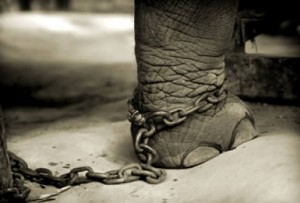Rights of Animals
In the short but cunningly constructed imaginative work The Lives of Animals, protagonist Elizabeth Costello is about to give a lecture at fictional Appleton College. A novelist herself and an advocate for animal rights, Costello is, in her own words, “an old woman” who no longer has the time “to say things I do not mean.” Before a shocked audience, she proceeds to compare the routine slaughter of animals to Nazi concentration camps.
She explains that the average person is in as much a state of denial about what takes place in factory farms, slaughterhouses, and medical testing facilities as the average German who lived within proximity of a concentration camp of what went on under the Nazis. This “enterprise of degradation, cruelty, and killing” of animals, she argues, “rivals anything that the Third Reich was capable of, indeed dwarfs it,” thereby echoing Jewish writer Isaac Bashevis Singer’s description of the plight of animals as an “eternal Treblinka.”
South African writer J.M. Coetzee, the author of this lecture in the form of a novel, steers his main character away from detailing the crimes of man against animal. Instead, Elizabeth Costello strives to convey that animals have embodied souls. As such, their bodies should not be imprisoned nor their souls extinguished, not if humans are to act nobly and with true sympathy. This is more than vegetarianism. It is a plea for humans to awake to moral responsibilities that have been dulled by the appeal of modern efficiency. Why a novel and not simply a straight lecture from Coetzee? Because, the novelist implies, we must make the same kind of imaginative leap to empathize with animals (who live but cannot speak to us) as we do with fictional characters (who do not live but whose words resonate nonetheless).
The philosophy that animates the animal rights movement – and that Coetzee engages in his lecture as novel – draws from many traditions. The Pythagoreans, in their attempt not to eat reincarnated souls, did not eat meat (or even beans). Strict Hindus refrain from meat-eating for similar reasons, while Buddhists and Jains do their utmost not to hurt any living creature, from ants on the ground to mosquitoes in the air.
The modern animal rights movement in the West can be dated to philosopher Peter Singer’s 1973 article in The New York Review of Books that urged an extension of the “rights” approach of the women’s, civil rights, and gay/lesbian movements to the sphere of animals. In the three decades since, the animal rights movement has done battle with furriers, the pharmaceutical industry, medical laboratories, chicken batteries and hog farms, and even Hollywood over its treatment of animals in films. This activism has largely been non-violent, from ketchup-squirting on fur coats to prominent ad campaigns against medical experimentation on animals. However, a fringe of the movement has orchestrated bomb campaigns and midnight liberations of test animals. For some in the movement, not wearing fur, not eating meat, and not using cosmetics tested on rabbits is sufficient. The more visionary souls, however, urge a radical reordering of human priorities. At bottom, they challenge the Renaissance humanism that proclaimed “man as the measure of all things.”
Is animal rights a subcategory of human rights or is there a categorical difference between the two? In other words, should humans behave more responsibly toward animals because of what links us or what divides us? Is it morally defensible to sacrifice the lives of animals in order to save the lives of humans? Is the more humane treatment of livestock a necessary reform of the food system or merely the hanging of curtains on the cell windows of the condemned? Is vegetarianism a moral imperative, an individual decision, or a culturally defined lifestyle? Is the human subordination of animals hardwired into our consciousness, or is it a social construct that compares to other forms of oppression like racism and sexism? Is the comparison of an animal slaughterhouse to the concentration camps of the Nazis unacceptably provocative or distressingly accurate?
On a trip to Provisions, you can read Lori Gruen and Peter Singer’s “graphic” guide to animal liberation, check out the interviews and articles and recipes in the colorful magazine Satya,log on for a comprehensive list of links related to animal rights, flip through artist Sue Coe’s paintings in Dead Meat drawn from her visits to forty slaughterhouses, listen to the anarcho-punk band Subculture’s “Captured in the Wilderness,” and see the documentary Mclibel about the two activists who went up against McDonald’s for its deleterious impact on animals (including humans).


